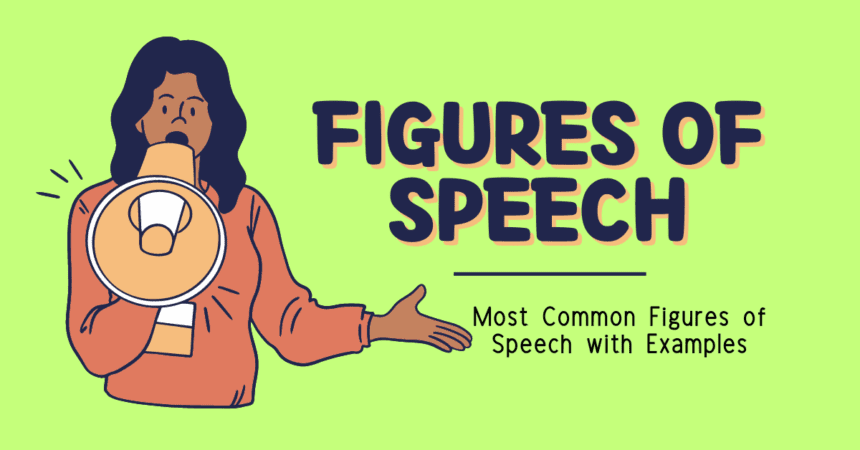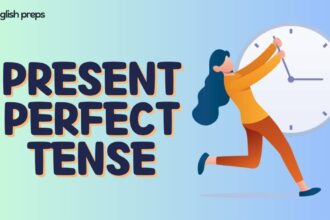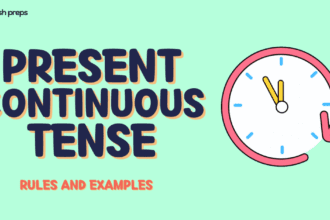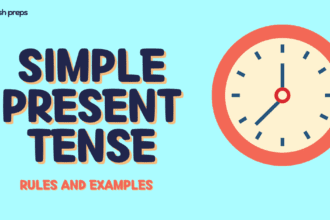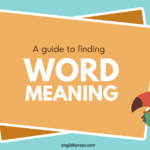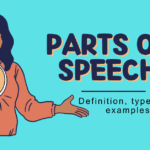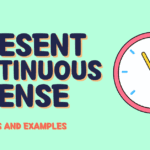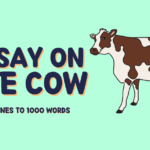A figure of speech is a word or phrase that is used in a non-literal sense to add emphasis or artistic effect. For example, if someone says “The room was so quiet you could hear a pin drop,” they are using a figure of speech to exaggerate the silence in the room for emphasis.
Figures of speech are literary devices that are used to create a more imaginative and engaging way of speaking or writing. These literary devices are often used to create vivid images or to express complex ideas in a more concise and impactful way.
Some common examples of figures of speech include metaphors, similes, personification, hyperbole, and irony. These devices are often used in poetry and literature to add depth and meaning to the text.
Did you know
Figures of speech are also known as figures of rhetoric, rhetorical figures, figurative language, figures of style, and schemes.
Most Common Figures of Speech in English Grammar
There is no fixed number of figures of speech in English grammar. New figures of speech can be created and old ones can fall out of use, so the number is constantly changing. Additionally, different sources may classify figures of speech differently, so the number can vary depending on the criteria used. Some common figures of speech in English include:
Simile
In simple terms, a simile is a figure of speech that compares two things using the words “like” or “as.” It’s a way of describing something by saying it’s similar to something else.
Imagine you’re trying to describe how fast a cheetah runs. You could say, “The cheetah runs like lightning.” By using the word “like,” you’re comparing the cheetah’s speed to the speed of lightning. This is a simile because you’re saying the cheetah is similar to lightning in terms of speed.
Similes help make our language more interesting and descriptive. They can create vivid images in our minds and help us understand something better by relating it to something more familiar. For example, if you say, “Her smile is as bright as the sun,” you’re comparing the brightness of her smile to the brightness of the sun.
So, similes are like little tools that writers and speakers use to make their descriptions more engaging and imaginative. They allow us to compare things in a fun and creative way, using “like” or “as” to highlight the similarities between them.
Here are a few more examples of similes:
- “He is as brave as a lion.” This simile compares someone’s bravery to the courage of a lion, emphasizing their fearlessness.
- “Her voice was like music to my ears.” In this simile, the person’s voice is being compared to the pleasant and melodious nature of music.
- “The water shimmered like diamonds under the sunlight.” This simile compares the sparkling quality of water to the brilliance and shine of diamonds.
- “She ran as fast as a cheetah chasing its prey.” Here, the speed of the person running is likened to the incredible speed of a cheetah in pursuit of its prey.
- “His anger erupted like a volcano, spewing fiery words.” This simile compares the sudden and intense anger to the eruption of a volcano, highlighting the force and intensity of the emotions.
Metaphor
A metaphor is a figure of speech that compares two things by saying that one thing is another thing, even though they are not literally the same. It’s a way of describing something by using a word or phrase that is unrelated to the thing being described. Metaphors make our language more imaginative and creative.
Let’s look at an example to help explain it better. Imagine you want to describe a person who is very brave. You could say, “He is a lion.” Now, obviously, the person is not actually a lion. What you’re doing is using the word “lion” to describe his bravery. Lions are known for their courage and strength, so by calling him a lion, you’re saying that he has similar qualities.
Here are a few more examples to help you understand:
- “Her eyes are sparkling diamonds.” Here, the person’s eyes are being compared to diamonds to emphasize their brightness and beauty.
- “Time is money.” In this metaphor, time is compared to money to convey the idea that time, like money, is valuable and should be used wisely.
- “Life is a journey.” This metaphor suggests that life can be thought of as a journey, with ups and downs, detours, and destinations.
- “He has a heart of gold.” Here, someone’s kind and generous nature is being compared to a heart made of gold, emphasizing their good-heartedness.
- “The world is a stage.” This metaphor compares the world to a stage, suggesting that life is like a play with different roles and performances.
Metaphors help us see things in new and interesting ways. They add depth and layers of meaning to our language by comparing one thing to another. By using metaphors, we can express ourselves creatively and make our descriptions more engaging and imaginative.
Personification
Personification is a figure of speech that gives human qualities or attributes to non-human things or abstract concepts. It’s a way of making something (that is not alive or human) seem like it has human characteristics or abilities.
Let’s suppose you’re describing a storm. Instead of just saying, “The storm was loud and powerful,” you could use personification and say, “The storm roared and unleashed its fury.” By using the word “roared” and attributing the ability to unleash fury to the storm, you’re giving it human-like qualities of sound and emotions.
Personification helps us create a more vivid and relatable image in our minds. It helps us understand and connect with things that are not human by making them seem more familiar.
Here are a few more examples to help you understand:
- “The flowers danced in the breeze.” Here, the flowers are given the human quality of dancing, even though flowers cannot literally dance.
- “The sun smiled down on us.” This personification gives the sun the human ability to smile, adding a sense of warmth and happiness to the description.
- “The leaves whispered secrets to each other.” By attributing the action of whispering secrets to leaves, this personification creates a sense of intimacy and secrecy among the leaves.
- “The car coughed and sputtered before finally starting.” The act of coughing and sputtering is typically associated with humans, but here it is attributed to a car, giving it human-like qualities.
- “Time flies.” This personification suggests that time moves quickly, just like a bird or an insect in flight.
Personification helps make our language more colorful and imaginative. By giving non-human things human qualities, we can relate to them better and create more engaging and memorable descriptions.
Alliteration
Alliteration is a literary technique that involves the repetition of the same sound or letter at the beginning of closely connected words or stressed syllables. It’s a way of creating a rhythmic and musical effect in writing or speech.
To understand alliteration, let’s look at an example. Suppose you want to describe a rainy day and you say, “The raindrops danced delicately on the roof.” The repetition of the “d” sound in “raindrops,” “danced,” and “delicately” is an example of alliteration. It adds a pleasing and melodic quality to the sentence.
Here are a few more examples to help you understand:
- “Peter Piper picked a peck of pickled peppers.” This famous tongue twister is a playful example of alliteration, with the repeated “p” sound.
- “She sells seashells by the seashore.” In this phrase, the repeated “s” sound creates a smooth and flowing rhythm.
- “A big brown bear bounced on the bed.” The repeated “b” sound in this sentence adds emphasis and creates a strong beat.
- “Misty mountains majestically rise.” Here, the repeated “m” sound captures the sense of grandeur and adds a musical quality.
- “Silent as a shadow, he slipped through the night.” The repeated “s” sound in this sentence creates a sense of stealth and smoothness.
Alliteration is like a musical instrument in writing. It helps create a pleasing and rhythmic effect, making the language more memorable and engaging. It adds a touch of playfulness, emphasis, and sometimes even a sense of sound effects to the words.
Assonance
Assonance is a literary device that involves the repetition of vowel sounds in nearby words. It’s a technique used to create a musical or melodic effect in writing or speech.
To understand assonance, let’s look at an example. Imagine you want to describe a serene lake, and you say, “The serene scene of the lake.” The repetition of the long “ee” sound in “serene,” “scene,” and “lake” is an example of assonance. It creates a soothing and harmonious quality in the sentence.
Here are a few more examples to help you understand:
- “I feel the heat as I read.” In this sentence, the repeated “ee” sound in “feel,” “heat,” and “read” creates a flowing and musical effect.
- “The cat sat on the mat.” Here, the repeated short “a” sound in “cat,” “sat,” and “mat” adds a rhythmic quality to the sentence.
- “Hear the mellow wedding bells.” The repeated long “e” sound in “hear,” “mellow,” and “bells” creates a soft and melodic tone.
- “The owl howled at the moon.” In this example, the repeated long “o” sound in “owl” and “howled” adds emphasis and creates a haunting effect.
- “The rain in Spain falls mainly on the plain.” This famous phrase from the musical “My Fair Lady” demonstrates assonance with the repeated long “a” sound.
Assonance helps create a musical and lyrical quality in writing. It adds a pleasing and melodic effect, making the language more memorable and engaging. Assonance, along with other sound devices like alliteration and rhyme, can enhance the overall beauty and rhythm of a piece of writing or speech.
Consonance
Consonance is a literary device that involves the repetition of consonant sounds in nearby words, specifically in the middle or at the end of words. It is a technique used to create a harmonious and musical effect in writing or speech.
To understand consonance, let’s look at an example. Imagine you want to describe the sound of the waves, and you say, “The waves crashed and splashed.” The repeated “sh” sound in “crashed” and “splashed” is an example of consonance. It creates a soothing and rhythmic quality in the sentence.
Here are a few more examples to help you understand:
- “Mike likes his bike.” In this sentence, the repeated “k” sound in “Mike,” “likes,” and “bike” adds a crisp and sharp quality to the sentence.
- “Pitter-patter, raindrops scatter.” The repeated “t” and “r” sounds in this phrase create a sense of lightness and quick movement.
- “She sells seashells by the seashore.” Here, the repeated “s” and “sh” sounds add a soft and smooth rhythm to the sentence.
- “The whisper of the wind.” In this example, the repeated “w” sound in “whisper” and “wind” creates a gentle and airy effect.
- “A sweet tweet from a little bird.” The repeated “t” sound in “sweet,” “tweet,” and “little” adds emphasis and creates a playful tone.
Consonance helps create a musical and harmonious quality in writing. It adds a pleasing and rhythmic effect, making the language more memorable and engaging. Consonance, along with other sound devices like alliteration and rhyme, can enhance the overall beauty and rhythm of a piece of writing or speech.
Anaphora
Anaphora is a literary device that involves the repetition of a word or phrase at the beginning of successive clauses or sentences. It’s a technique used to add emphasis and create a powerful effect in writing or speech.
To understand anaphora, let’s look at an example. Imagine you want to inspire a group of people, and you say, “We will fight for justice. We will fight for equality. We will fight for a better future.” In this example, the repetition of the phrase “We will fight” at the beginning of each sentence is anaphora. It creates a sense of determination and reinforces the message.
Here are a few more examples to help you understand:
- “I have a dream that one day… I have a dream that one day…” In Martin Luther King Jr.’s famous speech, the repetition of the phrase “I have a dream” at the beginning of multiple sentences emphasizes the vision and hope.
- “Love is patient. Love is kind. Love is selfless.” The repetition of the word “love” at the beginning of each sentence highlights different aspects of love.
- “Let it snow, let it snow, let it snow.” In this phrase, the repetition of “let it snow” creates a sense of longing or excitement for snowfall.
- “I came, I saw, I conquered.” This famous quote from Julius Caesar demonstrates anaphora with the repetition of “I” at the beginning of each phrase, emphasizing the speaker’s actions.
Anaphora helps create a strong and memorable effect in writing or speech. By repeating words or phrases, it adds emphasis, rhythm, and power to the message being conveyed. Anaphora can be used to inspire, persuade, or create a sense of unity by reinforcing key ideas or themes.
Apostrophe
An apostrophe is a figure of speech that involves addressing or speaking to someone or something that is not present or cannot respond as if they were present and able to listen. It’s a way of giving human-like qualities or directly addressing an absent person, an inanimate object, or even an abstract concept.
To understand apostrophe, let’s look at an example. Imagine you’re looking at a beautiful sunset, and you say, “Oh, Sun, your golden rays embrace the world.” In this sentence, you are directly addressing the Sun as if it can hear you and feel its rays. This is an example of apostrophe.
Here are a few more examples to help you understand:
- “O, Romeo, wherefore art thou Romeo?” In Shakespeare’s play Romeo and Juliet, Juliet is speaking to Romeo, who is not physically present. She is expressing her longing for him.
- “O, Death, be not proud.” In John Donne’s poem “Death, be not proud,” the poet directly addresses death and challenges its power.
- “Ocean, you mighty force, swallow my sorrows.” Here, the speaker is speaking to the ocean, personifying it as a powerful entity capable of engulfing their sorrows.
- “Hello, old friend, how I’ve missed you.” This is an example of addressing an absent friend, expressing the speaker’s sentiment of longing or nostalgia.
Apostrophe allows writers and speakers to give life and voice to non-living things or absent individuals. It adds emotional depth, expresses intense feelings, and helps create a sense of connection with the subject being addressed. Apostrophe is a powerful tool to convey emotions, explore ideas, and create a dramatic effect in literature and poetry.
Hyperbole
Hyperbole is a figure of speech that involves exaggeration or overstatement for emphasis or dramatic effect. It’s a way of making something sound much bigger, greater, or more extreme than it actually is.
To understand hyperbole, let’s look at an example. Imagine you’re really hungry, and you say, “I’m so hungry, I could eat a horse!” Now, of course, you don’t actually mean that you could eat an entire horse. By using hyperbole, you’re exaggerating your hunger to emphasize just how strong it is.
Here are a few more examples to help you understand:
- “I’ve told you a million times!” Here, the speaker is exaggerating the number of times they have told someone something to emphasize their frustration.
- “This suitcase weighs a ton!” The speaker is exaggerating the weight of the suitcase to emphasize how heavy it feels.
- “I’m as old as the hills.” This hyperbole suggests that the speaker is very old, even though they may not be that old in reality.
- “She cried an ocean of tears.” This exaggeration emphasizes the intensity and amount of tears shed by the person.
- “I have a million things to do today.” The speaker is exaggerating the number of tasks they need to accomplish to emphasize a busy schedule.
Hyperbole helps create emphasis, adds humor, and makes a point more memorable. By using extreme exaggeration, writers and speakers can draw attention to a particular aspect or evoke strong emotions in their audience. It adds a touch of excitement and playfulness to the language.
Litotes
Litotes is a figure of speech that involves expressing an idea by using understatement or negation to convey the opposite meaning. It’s a way of making a point by stating something in a negative or ironic way, rather than directly affirming it.
To understand litotes, let’s look at an example. Suppose someone asks you if you enjoyed a movie that you absolutely loved, and you respond, “Oh, it wasn’t bad.” By using litotes, you’re downplaying your true enthusiasm and expressing it indirectly. The negative statement of “wasn’t bad” actually means that you really enjoyed the movie.
Here are a few more examples to help you understand:
- “She’s not unfamiliar with the topic.” This litotes suggests that the person is actually quite knowledgeable about the topic.
- “He’s not the friendliest person.” This understatement implies that the person is not very friendly at all.
- “It’s not a bad view from here.” This litotes implies that the view is actually quite good or impressive.
- “She’s no ordinary singer.” This statement suggests that the person is an exceptional or extraordinary singer.
- “He’s not unfamiliar with trouble.” This litotes implies that the person is frequently involved in troublesome situations.
Litotes allows writers and speakers to make a point indirectly by using a form of understatement or negation. It adds a layer of subtlety, irony, or modesty to the language, and can be used to downplay or highlight certain qualities or situations. Litotes adds depth and nuance to expressions and can be an effective way to make a statement more memorable.
Euphemism
Euphemism is a figure of speech that involves using mild or indirect words or phrases to replace harsh, blunt, or sensitive terms. It’s a way of softening or sugar-coating the language to convey a potentially uncomfortable or offensive idea in a more polite or socially acceptable manner.
To understand euphemism, let’s look at an example. Suppose someone is talking about a person who passed away, and instead of saying “he died,” they say “he passed away.” By using euphemism, they’re choosing a gentler phrase to talk about the sensitive topic of death.
Here are a few more examples to help you understand:
- “She’s in a better place now.” This euphemism is often used to refer to someone who has died, suggesting that they are in a peaceful or happier state.
- “He’s let go from his job.” This euphemism is used to soften the idea of being fired or terminated from employment.
- “I’m under the weather.” This phrase is a euphemism for saying that you’re feeling sick or unwell.
- “She’s expecting.” This euphemism is used to indicate that someone is pregnant.
- “He’s a little challenged in that area.” This euphemism is used to avoid directly saying that someone is lacking in a particular skill or ability.
Euphemisms help us navigate sensitive or potentially offensive topics by using more polite or less harsh language. They allow us to convey ideas with a touch of diplomacy, respect, or cultural sensitivity. Euphemisms are widely used in social settings, formal contexts, or when discussing delicate matters. They provide a way to discuss difficult subjects while maintaining politeness and decorum.
Antithesis
Antithesis is a figure of speech that involves contrasting or juxtaposing two opposing ideas, words, or phrases within a sentence or paragraph. It’s a way of highlighting the stark contrast between two things to create a powerful effect or emphasize a point.
To understand antithesis, let’s look at an example. Suppose you want to describe a character who is both kind and cruel, and you say, “She was both the epitome of kindness and the embodiment of cruelty.” In this sentence, the contrasting ideas of kindness and cruelty are placed side by side, creating an antithesis. It emphasizes the stark opposition between the two qualities.
Here are a few more examples to help you understand:
- “It was the best of times, it was the worst of times.” In this famous line from Charles Dickens’ novel “A Tale of Two Cities,” the contrast between the best and worst of times emphasizes the extreme nature of the era being described.
- “Love is an ideal thing, marriage a real thing.” This antithesis juxtaposes the idealized notion of love with the practical reality of marriage.
- “Give me liberty or give me death.” This well-known phrase by Patrick Henry highlights the choice between freedom and death, creating a powerful antithesis.
- “To err is human; to forgive, divine.” This antithesis contrasts the fallibility of human nature with the divine quality of forgiveness.
Antithesis allows writers and speakers to highlight the stark opposition between two contrasting ideas, emphasizing their differences and creating a strong impact. By placing contrasting words or phrases side by side, antithesis adds emphasis, drama, and clarity to the language. It can be used to convey deeper meaning, create memorable statements, or draw attention to the stark contrast between concepts.
Paradox
A paradox is a figure of speech that involves a statement or situation that appears to be contradictory or absurd, but upon closer examination, reveals a deeper truth or logic. It’s a way of presenting a seemingly illogical or contradictory idea to provoke deeper thinking and contemplation.
To understand paradox, let’s look at an example. Imagine someone says, “I can resist anything except temptation.” At first, it may seem contradictory because resisting implies not giving in to something, while temptation suggests a strong desire to indulge. However, the paradox reveals the human struggle and the irony that resisting temptation can be particularly challenging.
Here are a few more examples to help you understand:
- “The more you know, the more you realize you don’t know.” This paradox highlights the idea that as knowledge increases, awareness of one’s own ignorance also grows.
- “I’m nobody.” This paradoxical statement suggests that by claiming to be nobody, one may actually be asserting their individuality or unique perspective.
- “This is the beginning of the end.” This paradox captures the contradictory notion that an ending can also mark the start of something new.
- “You have to be cruel to be kind.” This paradox suggests that sometimes, an act of apparent cruelty can actually be a kind or compassionate action in the long run.
Paradoxes challenge our thinking by presenting ideas that seem contradictory on the surface but contain a deeper truth or insight. They engage our minds, provoke reflection, and encourage us to question assumptions and explore complexities. Paradoxes can be found in literature, philosophy, and everyday language, and they help us grapple with the complexities of life and the inherent contradictions within our world.
Oxymoron
An oxymoron is a figure of speech that combines two contradictory or opposite terms to create a new meaning or concept. It’s a way of expressing a paradoxical idea by placing contrasting words side by side.
To understand an oxymoron, let’s look at an example. Imagine someone says, “bittersweet.” The term “bitter” and “sweet” are opposites, as bitterness and sweetness are contradictory tastes. However, when used together as an oxymoron, “bittersweet” creates a unique meaning that expresses a complex blend of both positive and negative emotions.
Here are a few more examples to help you understand:
- “Jumbo shrimp.” The word “jumbo” suggests something large, while “shrimp” refers to something small. Together, they create an oxymoron that plays on the contrasting sizes.
- “Living dead.” This oxymoron combines the idea of being alive (“living”) with the notion of being deceased (“dead”).
- “Deafening silence.” The word “deafening” suggests a loud and overwhelming sound, while “silence” refers to the absence of sound. This oxymoron creates a powerful image of a silence that is so profound it becomes almost overwhelming.
- “Cruel kindness.” This oxymoron combines the contrasting ideas of cruelty and kindness, suggesting a kind act that may have an unintended negative impact.
Oxymorons add depth, complexity, and intrigue to language. By combining contradictory terms, they create a vivid and memorable effect. Oxymorons often capture the nuances and complexities of human experiences by highlighting the coexistence of opposing elements. They challenge our expectations, provoke thought, and provide a fresh perspective on familiar concepts.
Epigram
An epigram is a short and witty statement or verse that expresses a clever or insightful idea. It’s a concise and memorable way of conveying a thought, often with a touch of humor or irony.
To understand an epigram, let’s look at an example. Imagine someone saying, “I can resist everything except temptation.” This short statement by Oscar Wilde captures a clever twist on the idea of resisting temptation, highlighting the humorous struggle many people face.
Here are a few more examples to help you understand:
- “In youth, we learn; in age, we understand.” This epigram by Marie von Ebner-Eschenbach captures the idea that as we grow older, we gain wisdom and a deeper understanding of life.
- “A little learning is a dangerous thing.” This epigram by Alexander Pope highlights the idea that having limited knowledge on a subject can be more harmful than having no knowledge at all.
- “I can resist everything but temptation.” This playful epigram by Oscar Wilde adds a humorous twist by emphasizing the difficulty of resisting temptation.
- “Honesty is the best policy, but insanity is a better defense.” This epigram plays on the idea that sometimes, unconventional or unexpected approaches can yield surprising results.
Epigrams are often used to encapsulate a complex idea concisely and cleverly. They provide a memorable way to express a thought, provoke thought, or offer a fresh perspective on a subject. Epigrams are commonly found in literature, speeches, and everyday conversations. They add a touch of wit, humor, and insight to the language, making them a powerful and engaging form of expression.
Irony
Irony is a figure of speech that involves the use of words or expressions to convey a meaning that is the opposite of their literal meaning. It is a way of using language to express a contrast between what is said and what is meant, or between what is expected to happen and what actually happens.
To understand irony, let’s look at an example. Imagine it’s raining heavily outside, and someone looks out the window and says, “What a beautiful day!” Here, the statement is ironic because the speaker’s words directly contradict the reality of the rainy weather.
There are three main types of irony:
- Verbal irony: This involves saying one thing but meaning the opposite. For example: “Oh, that’s just great. Now we’re really in trouble.” (said sarcastically when something goes wrong)
- Dramatic irony: This occurs when the audience or reader knows something that the characters in a story or play do not. For example: In the play “Romeo and Juliet,” the audience knows that Juliet is not really dead, but Romeo does not, and he kills himself in despair.
- Situational irony: This involves a situation in which the outcome is the opposite of what was expected or intended.
Here are a few more examples to help you understand:
- A fire station burns down. This is an example of situational irony because it’s unexpected and contrary to what one would normally expect to happen.
- A dentist with bad teeth. This is an example of verbal irony because it’s a contradiction between what is said (a dentist is someone who takes care of teeth) and the situation (the dentist has bad teeth).
- A person saying “I love waking up early” when they’re known for always sleeping in. This is an example of irony because their words contradict their actions or reputation.
- A person saying “Great job!” sarcastically when someone makes a mistake. This is an example of dramatic irony because the person’s words convey the opposite of what they truly mean.
Irony adds depth and complexity to language by highlighting contradictions or unexpected outcomes. It can be used to convey humor, make a point, or create a sense of surprise. Irony often relies on context or an understanding of the situation to appreciate the contrast between what is expected and what actually occurs. It’s a powerful tool in literature, comedy, and everyday communication.
Pun
A pun is a figure of speech that involves the use of words that have multiple meanings or that sound similar to create a humorous or clever effect. It is a play on words that relies on the use of words that have more than one meaning or that sound similar to create a humorous or clever effect.
To understand a pun, let’s look at an example. Imagine someone says, “I used to be a baker, but I couldn’t make enough dough.” In this pun, the word “dough” has a double meaning. It can refer to the bread-making ingredient, but it is also used colloquially to mean money. The pun cleverly plays on this dual meaning to create a humorous effect.
Here are a few more examples to help you understand:
- “I’m reading a book about anti-gravity. It’s impossible to put down!” This pun relies on the double meaning of “put down” as both physically placing something down and losing interest in a book.
- “I used to be a baker, but I couldn’t make enough bread. It wasn’t my knead.” This pun plays on the words “bread” and “knead,” using a word that sounds similar to “need” to create a humorous effect.
- “I’m glad I know sign language; it’s pretty handy.” This pun relies on the double meaning of “handy” as both having practical skills and being physically helpful.
- “Why did the scarecrow win an award? Because he was outstanding in his field!” This pun uses the word “outstanding” to play on the idea of the scarecrow being exceptional in his field (the field where crops grow).
Puns are a form of wordplay that adds humor, cleverness, and wit to language. They rely on the multiple meanings, homophones (words that sound the same but have different meanings), or wordplay to create a humorous or clever effect. Puns can be found in jokes, advertising slogans, literature, and everyday conversations. They’re a playful and entertaining way to engage with language and tickle our funny bones.
Metonymy
Metonymy is a figure of speech that involves using a word or phrase to represent something closely associated with it, but not actually part of it. It’s a way of referring to something by mentioning another word or phrase that is related to it.
To understand metonymy, let’s look at an example. Imagine someone says, “The pen is mightier than the sword.” Here, the word “pen” is used to represent writing or communication, while the word “sword” symbolizes warfare or violence. The phrase suggests that the power of words and ideas (represented by the pen) can be more influential than physical force (represented by the sword).
Here are a few more examples to help you understand:
- “The crown” refers to a king or queen. In this case, the word “crown” is used to represent the power and authority associated with royalty.
- “The White House issued a statement.” Here, “White House” is used to represent the government or the President of the United States, as the White House is closely associated with political decision-making.
- “Let me give you a hand.” In this expression, “hand” is used to represent assistance or help, indicating a willingness to support or lend a hand.
- “The press” refers to journalists or the media. Here, the word “press” is used to represent the industry or people involved in news reporting.
Metonymy allows us to use a word or phrase closely related to something to represent or refer to it. It adds depth, symbolism, and economy to language by using associations to convey meaning. Metonymy is commonly used in literature, poetry, speeches, and everyday conversations. It provides a way to express ideas concisely and indirectly, while still being understood within the context.
Synecdoche
Synecdoche is a figure of speech that involves using a part of something to represent the whole or using the whole to represent a part. It’s a way of referring to something by mentioning a related, but distinct, part or whole.
To understand synecdoche, let’s look at an example. Imagine someone says, “All hands on deck!” Here, the word “hands” is used to represent the whole person or the entire crew on a ship. By referring to a part (hands), the speaker is actually referring to the larger group (the crew).
Here are a few more examples to help you understand:
- “Nice wheels!” Here, the word “wheels” is used to refer to a car. The wheels are just a part of the car, but they represent the whole vehicle.
- “The law” refers to the police or legal system. In this case, the word “law” is used to represent the entire system of rules and law enforcement.
- “He’s a hired gun.” Here, the phrase “hired gun” is used to represent a person who is hired to carry out a specific task or job. The term “gun” refers to the person as a whole.
Synecdoche allows us to use a specific part or whole to represent something larger or smaller, creating a figurative meaning. It adds richness and depth to language by using associations and connections. Synecdoche can be found in literature, poetry, speeches, and everyday conversations. It provides a way to convey meaning in a concise and evocative manner by using familiar relationships between parts and wholes.
Onomatopoeia
Onomatopoeia is a figure of speech that involves using words that imitate or mimic the sound associated with the object or action they describe. It’s a way of creating a connection between the word and the sound it represents, making the text more vivid and engaging for the reader or listener.
To understand onomatopoeia, let’s look at some examples. Imagine the sound of a clock ticking, and someone says, “tick-tock.” Here, the word “tick-tock” imitates the actual sound made by the clock, creating an onomatopoeic effect.
Here are a few more examples to help you understand:
- “Buzz” represents the sound of a bee flying around.
- “Boom” imitates the sound of an explosion.
- “Hiss” imitates the sound a snake makes.
- “Splash” imitates the sound of something falling into water.
Onomatopoeic words add a sense of realism, sensory experience, and sound imagery to writing. They allow readers to imagine or hear the sounds being described more vividly. Onomatopoeia is commonly used in literature, poetry, comic books, and children’s stories. By using words that imitate sounds, writers and speakers can bring their descriptions to life and engage the senses of their audience.
Classification of Figures of Speech
Figures of speech can be classified into various categories based on the different ways they manipulate language. Here are some common classifications of figures of speech:
- Figures of Comparison:
- Simile: Comparing two things using “like” or “as” (e.g., “She sings like an angel”).
- Metaphor: Describing something by equating it with another unrelated thing (e.g., “He’s a shining star”).
- Figures of Substitution:
- Metonymy: Using a word or phrase to represent something closely associated with it (e.g., “The pen is mightier than the sword”).
- Synecdoche: Using a part to represent the whole or vice versa (e.g., “All hands on deck”).
- Figures of Overstatement or Understatement:
- Hyperbole: Exaggerating or overstating for emphasis or effect (e.g., “I’m so hungry, I could eat a horse”).
- Litotes: Understating or expressing something by negating its opposite (e.g., “She’s not unkind”).
- Figures of Sound:
- Alliteration: Repeating the same sound or letter at the beginning of closely connected words (e.g., “Peter Piper picked a peck of pickled peppers”).
- Assonance: Repetition of similar vowel sounds within words (e.g., “fleet feet sweep by sleeping geese”).
- Figures of Address or Apostrophe:
- Apostrophe: Directly addressing an absent person or an abstract idea as if it were present (e.g., “O, Romeo, Romeo! Wherefore art thou Romeo?”).
- Figures of Irony or Contrast:
- Irony: Expressing something contrary to the intended meaning for humorous or dramatic effect (e.g., “The teacher said the test was easy, but it was actually very difficult”).
- Oxymoron: Combining two contradictory terms to create a new meaning (e.g., “bittersweet” or “jumbo shrimp”).
- Figures of Repetition:
- Anaphora: Repeating the same word or phrase at the beginning of successive clauses or sentences (e.g., “I have a dream… I have a dream…”).
- Epiphora or Epistrophe: Repeating the same word or phrase at the end of successive clauses or sentences (e.g., “When I was a child, I spoke as a child, I understood as a child, I thought as a child”).
These are just a few examples of how figures of speech can be classified. Note that some figures of speech may fall into multiple categories, and there can be variations and subcategories within each classification.
Frequently Asked Questions
What is the purpose of using figures of speech?
Figures of speech serve various purposes in communication. They add depth, creativity, and vividness to language, making it more engaging, memorable, and expressive. They help convey complex ideas, evoke emotions, create imagery, and enhance the overall impact of the message being communicated.
How do figures of speech enhance writing and speaking?
Figures of speech enhance writing and speaking by adding rhetorical devices and literary techniques that make the language more interesting and impactful. They capture the attention of the audience, evoke emotions, paint vivid pictures, and create a lasting impression. They make communication more persuasive, memorable, and engaging.
Can figures of speech be used in everyday conversations?
Absolutely! Figures of speech are not limited to formal writing or literature. They can be used in everyday conversations to make your speech more colorful, expressive, and engaging. Whether it’s using a simile to describe something, employing a metaphor to convey meaning, or utilizing a witty pun, figures of speech can add flair to your everyday communication.
How can one improve their use of figures of speech?
Improving the use of figures of speech involves developing a strong grasp of different types of figures of speech and their appropriate usage. Reading widely, exploring various literary works, and studying examples of figures of speech can enhance your understanding and help you recognize their applications in different contexts. Regular practice and experimentation in writing and speaking can also improve your ability to incorporate figures of speech effectively.



